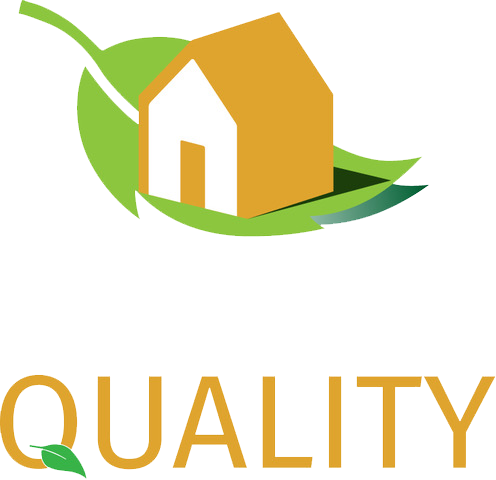Build a sustainable future for your business with our sustainability consulting services
At Sustain Quality, we provide innovative and forward-thinking solutions to construction companies, architects, and contractors that focus on environmental, social and corporate governance (ESG) strategy for organisations.
We help our clients work towards a net-zero service balanced with global sustainable goals, in a way that is tailored to their business and the industry they work in.
What Are ESG’s?
The abbreviated terminology ESG refers to the consideration of environmental, social and governance factors–alongside typical financial factors–in investment decision-making processes.

This is an increasingly popular way of making decisions that is gaining traction especially in the construction and architectural industries.
As a result, many investors are looking to incorporate ESG’s into their future portfolio decisions.

Achieving A Sustainable Route with Sustain Quality
We understand that zero/low carbon strategy for organisations requires much more than just consideration of the building design and construction technology. At Sustain Quality, we help your business to adopt a comprehensive approach that includes the perspectives of the end users and occupants of a building.
3 Sustainable Consulting Steps
Together, we can plan and execute a sustainability strategy in X3 simple steps that can be measured and continually improved, to ensure that your business is always ahead of the curve.
We work with you to meet UK and European legislation to reduce carbon emissions and ESG to get you on the net zero pathway.
Our 3 simple strategy steps are:
The Survey
Where we conduct a comprehensive site survey/visit to understand you and your organisation
The Action Plan
Where we identify actions from the site survey which can include: The GRI Standard, GHG Carbon Emission Calculation’s and others
Continuous Improvement
Where we review our action plan and look to improve calculations, the accuracy of them and the expansion of scope.


The Survey
In the survey, we take time to fully understand your business processes and assess your current Environmental, Social, and Corporate Governance (ESG) footprint.
We figure out what’s important for your business and what ESG means to you, along with reviewing your existing policies and actions related to these important issues. We’ll then be able to come up with a strong plan to help you embed ESG considerations into your business.
The Action Plan
After assessing your current situation and coming up with an action plan to embed ESG into the very heart of your business, we’ll provide support on delivering your plan in two stages:
The Eco Audit
A tailor-made assessment that will introduce beneficial ESG strategies into your business plan, while highlighting opportunities for education and engagement within your organisation for a sustainable culture.
This stage may include Carbon Counting, Life Cycle Assessment, Environmental Policy, Energy Feasibility Studies, Workshops and more.
Using the Greenhouse Gas Protocol Standard
Carbon footprint reporting as per the Greenhouse Gas Protocol Corporate Standard can be reported according to 3 emission types:
Direct Emissions:
Scope 1
Direct emissions resulting from activity within an organisations control which could include company vehicles, on-site fuel combustion, manufacturing and process emissions and refrigerant losses.
Indirect Emissions:
Scope 2
Although organisations are not directly in control of their energy sources, the responsibility begins for sources such as: electricity, heat or steam, which is obtained through purchasing or using which are classified as indirect emissions.
Any Other Indirect Emissions:

Scope 3
For many organisations the highest proportion of carbon emissions sit within Scope 3, examples of these types of emissions would be sources outside of an organisations direct control such as: purchased goods and services, use of sold goods, employee commuting and business travel, outsourced transportation, waste disposal and water consumption.
Understanding Carbon Offsetting and Reducing Greenhouse Gases
Organisations around the world have started to use offsets as a voluntary way to reduce their carbon emissions indirectly. This has created a voluntary offset market commonly known as the “offsetting market”.
With concern over climate change, many forward-thinking corporations and organisations are looking at their need to understand carbon emissions and how this can be minimised, offset and calculated through third-party organisations.
Carbon offsetting means ‘balancing,’ ‘compensating,’ or ‘neutralising’ the carbon emissions from a given activity by paying into a scheme or project which will reduce emissions elsewhere. They are generated from projects that reduce the number of greenhouse gases entering the atmosphere.

Carbon Reduction Eligible Projects and SQ Standards
When offsetting carbon emissions it is always important to partner with trusted organisations that guarantee every project is held to the strictest of standards. A carbon offset certificate represents one tonne of CO2 reduction in the atmosphere.
Projects can offset emissions by investing in high quality carbon reduction projects classified as Gold Standard Verified Reductions (VERs), Certified Emission Reductions (CERs) and Verified Carbon Units (VCUs) credits.
At Sustain Quality our standards work alongside those of the Carbon Trust and Climate Active initiatives to expertly guide and support clients towards management of greenhouse gases and carbon emissions and looks to align businesses and organisations towards future targets and strategies as an advisory partner committed and dedicated to assisting our clients towards decarbonisation and accelerating net-zero.
As trusted and skilled experts we utilise our expertise to aid those organisations, bodies, businesses and partners wanting to achieve:
Continuous Improvement
Making sustainability a core aspect of your business doesn’t happen overnight, it needs to be embedded into every level to ensure success.
We’ll help you to review and challenge your business model to ensure it’s working effectively.
Keep the sustainability conversation going with your employees, measure your net zero campaign’s impact and ask for feedback so you can see where you need to go next.
ESG investing and the United Nations’ Sustainable Goals
More companies and individuals are placing importance on ESG performance in business which aligns with the 17 Sustainable Development Goals (SDGs) set out in the UN’s 2030 Agenda for Sustainable Development. (Appendix A).
Within these goals, the UN has recognised that ending poverty and deprivation must come hand-in-hand with other strategies that improve health, education, inequality, climate preservation and economic growth.
Reporting and Understanding Advice to Achieve Net Zero
Adopted by all United Nations States in 2015, the 2030 Agenda for Sustainable Development is a shared partnership blueprint of 17 Sustainable Development Goals (SDGs) between developed and developing countries – recognising that the elimination of poverty and other depravations directly correlate with improvement strategies of health and education, reducing inequality and boosting economic growth whilst all stakeholders must commit to preserve our forests and oceans alongside negating the negative impact of climate change.

Positive action for the planet and people can be awarded through standard credits where investment into a safer climate and sustainable world through the reduction of generating CO2 emissions which can be achieved through calculations of data assessing and reaching a pathway for carbon neutrality through exercises that put organisations and events towards becoming a net zero carbon entity.
Read our blog on achieving and understanding net-zero by clicking on the link below.
The Importance of COP (Conference of the Parties)
Over 3 decades the UN has been collectively bringing together almost every country on earth together for climate summits called COP. Climate change has been brought to the forefront over that time as a global priority requiring consistent action to work to change the trajectory of side effects impacting us all across the world.
World Leaders along with negotiators, government representatives, businesses and citizens meet to discuss the unique urgency of working together to reach the Paris Agreement created in 2015 to limit global warming to well below 2 degrees with an aim of 1.5 degrees where countries are committed to bringing forward plans on how they will reduce their emissions, (known as Nationally Determined Contributions, NDCs) where money is made available to deliver on these aims, and to adapt to the changing climate that can cause damage to livelihoods and loss of live.
The agreed plan is to be reviewed and updated every 5 years to reflect the lengths of change and pace required according to the output of emissions and the need to limit global warming to the agreed 1.5 degrees and to do so before the end of the decade 2030. Read our blog introducing and discussing COP and climate change along with why it matters to businesses, communities as well as our environment.

Science-Based Targets (SBTi)
The Corporate Net-Zero Standard of SBTi is a world-first framework for setting net-zero corporate targets that align with climate science which includes guidance, criteria and recommendations for organisations and businesses to limit global temperature rises above 1.5 degrees.
The requirement of such targets for companies is based on emissions through direct action that sit within their own value chains or boundaries. Additional finance emission reductions beyond their science-based target can be considered as an option.
Companies are required to reduce emissions by 90% to reach net-zero under the Net-Zero Standard which can be achieved when long-term science-based targets are met. Targets are considered science-based if they fall in line with the Paris Agreement goals that adhere to the latest climate science classification.
A key contributing factor to reducing greenhouse gas emissions is onboarding private sector sustainability management targets into businesses and accurately tracking its progress through annual reporting.
Click on the link below for further reading on understanding SBTi’s and other acronyms in our blog: impactful investing for business and the environment.
Reaching Net-Zero Greenhouse Gas by 2050
The government is committed to achieving net-zero by 2050 and has a strategy to build back greener looking at the journey to net-zero across the economy and supporting transition across the economy leading the world in eradicating our part in contribution to man-made climate change by looking at clean and renewable sources of energy, industry, low carbon farming, heating in private homes and workplace buildings, removal of road emissions, restoration of our countryside’s, reformation of waste and to phase down fluorinated gases.
The government’s strategy for a ‘Green Industrial Revolution’ is set out in a ten point plan which includes working with businesses to reduce the cost of access to low carbon tech and sets out clear pathways across sectors to enable targets to be met allowing for the adaption of integration of emerging technologies and reducing costs of existing ones — whilst setting out clear policies and proposals to stay on track with our Nationally determined Contributions (NDCs) and supporting a global shift in greenhouse gas removal with monitoring and supporting verification to achieve a decarbonised economy by 2050.
Progressing and reaching the 2030 targets are a key factor in being able to reach the 2050 goal both at central and local government level alongside community areas where collective embedding of clear strategies into decision making and business processes pave the transitional route to net-zero.
For additional reading on GHGs, click on ‘find out more’ to understand greenhouse gases and their environmental impact.




